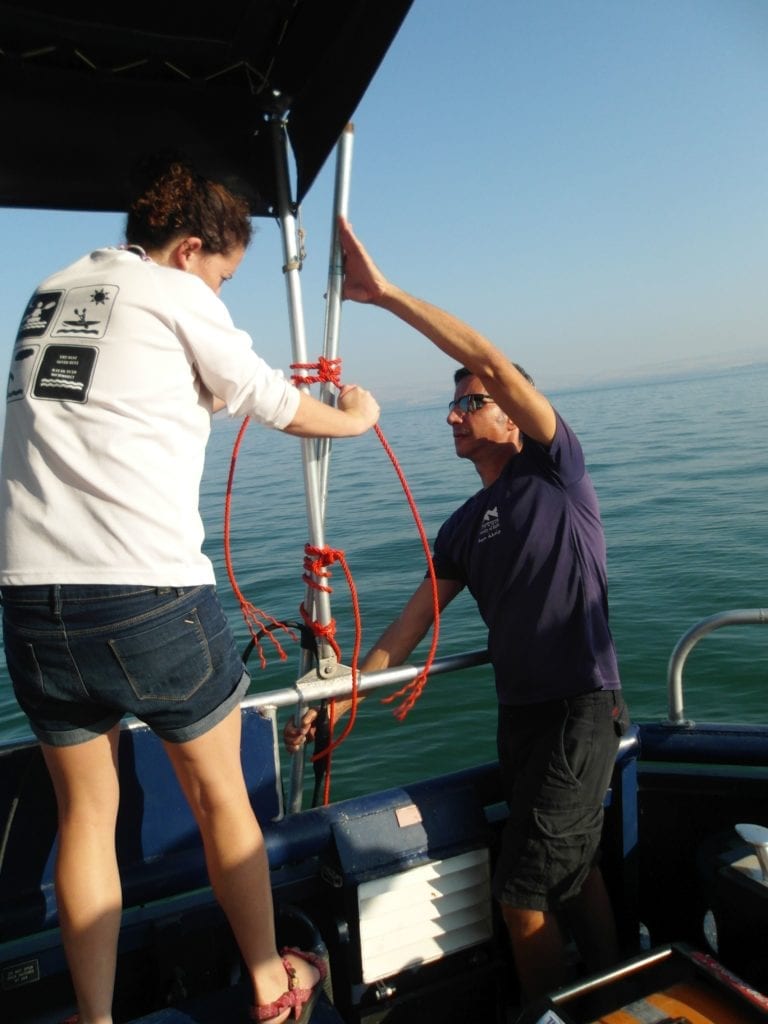The Dead Sea Transform (DST) fault system, also sometimes referred to as the Dead Sea Rift, is a series of faults that run from a junction with the East Anatolian Fault in southeastern Turkey to the northern end of the Red Sea Rift just offshore of the southern tip of the Sinai Peninsula. The fault system forms the transform boundary between the African Plate to the west and the Arabian Plate to the east.

The distribution of faults on Earth is not uniform. In some areas, there are no fractures at all, while in other areas there are a very large number of them. Sometimes a thick layer of soil can hide the fact that beneath it is a fracture, which can sometimes form a deep, wide crack in the rock. This usually occurs when the rock is not strong enough to withstand so much stress, making the rock crack along its weakest point.
The DST is a zone representing the relative motions of the two plates, both of them are moving in a general north-northeast direction, Part of it present in the southern part of

the fault, causing the Gulf of Aqaba, the Dead Sea, the Kinneret (Sea of Galilee) and Hula basins to form.
Movement of a few meters at a time for several seconds, followed by pauses, is due to the friction between the rock blocks that stops the displacement, until the pressure increases, overcomes the friction and causes another jump. Most earthquakes result from this friction and movement.
Most geological maps have been unable to map all the faults and especially which ones have been more active in recent years – and therefore, more prone to earthquakes. This is why accurate geological maps are important for managing the risks of building infrastructure and correctly assessing insurance costs.
Geologists have long believed that the central site of the Kinneret’s deepest sedimentary fill lies on the eastern side. But now, University of Haifa geologists have prepared the first-ever geological map of young faults (fractures) in the lake, and this marks the places prone to earthquakes.
“So far we have thought that most of the tectonic activity takes place in the eastern part of the Sea of Galilee,” said Dr. Michael Lazar from the Charney School of Marine Sciences at the University of Haifa, who led the study, which has just been published in the journal Scientific Reports. “Now we know that the fault splits and passes in the middle of the Sea of Galilee.”
The new study, carried out in collaboration with researchers from Italy, Switzerland and Norway, maps for the first time the shallow geological faults in the Sea of Galilee – from the bottom of the lake to a depth of two kilometers and points to the northern region.
“The findings of the study indicate that there are active faults throughout the length and breadth of the Kinneret and not just in the eastern region as previously thought. This means that the possible effects of earthquakes on these faults could reach all the banks of the Kinneret,” continued Lazar.

The Kinneret is a kind of geological mystery. The sediment near the bottom of the lake is saturated with gas, as the gas bubbles mask the geophysical signal and in fact do not allow researchers to “see” the geological structure of the shallow subsurface near the bottom and the map of young faults of the shallow subsurface. “Everyone who has dived in the Sea of Galilee feels the strange sensation of the bottom – from a feeling of mud from which bubbles rise. This is because of the gas that exists within the shallow layer near the bottom,” said Lazar.
To address the geological challenge of the Kinneret and draw an accurate geological map, the researchers chose a number of methods that complemented each other: they placed 12 very sensitive seismic stations for a year to detect small earthquakes around the Sea of Galilee. They also checked the geochemical composition of the springs around the lake, as this can give an indication of whether they come from a deep or shallow source. In addition, they conducted a high-resolution seismic survey using sonar in the center of the lake and reworked old data from 1997 from surveys of deeper strata, where there are no gas springs (at a depth of about 2.5 kilometers).
Using these various methods, the researchers were able to identify for the first time, 19 young faults under the bottom of the lake, 10 of which are

deep faults — an indication that they have been relatively active in recent years. Those that have no expression on the bottom are ones that have probably not been active in decades or even centuries,” Lazar stated.
Contrary to what has been thought so far, the researchers found that the Dead Sea fragment entering the Kinneret on its eastern side splits in two – with one fault continuing on the eastern side while the other continues along the center of the lake. “Now we know that the fault passes in the middle [north to south], a possible explanation of the very powerful earthquake that hit in 1837 [and destroyed much of the northern Galilee city of Safed.] We expect more earthquakes of varying magnitudes that will also eventually affect western coast,” concluded Lazar



